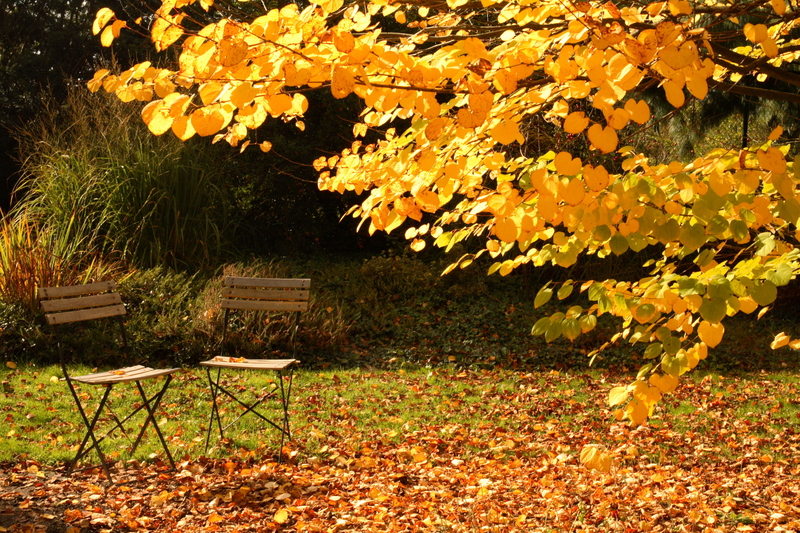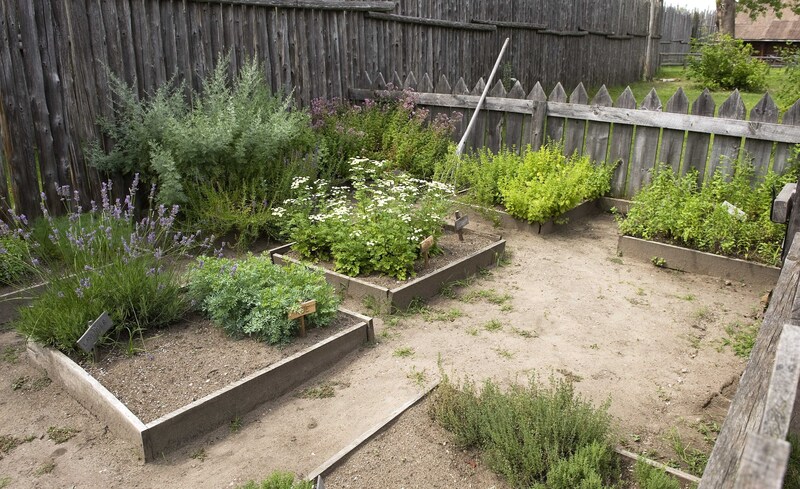The Journey to Flawless Orchid Blossoms
Posted on 02/07/2025
The Journey to Flawless Orchid Blossoms: A Complete Guide
If you've ever marveled at the delicate beauty of orchids, you know that achieving flawless orchid blossoms can seem like both an art and a science. From the exquisite colors to the intricate petal shapes, orchids captivate indoor-gardening enthusiasts and professional growers alike. Yet, many plant lovers are deterred by the myth that orchids are complicated or nearly impossible to care for. In this comprehensive guide, we will unveil the secrets behind growing healthy, blooming orchids--the key steps, common pitfalls, and expert tips--so you, too, can embark on your own remarkable journey to flawless orchid blossoms.
Understanding Orchids: Nature's Masterpieces
Orchids (family Orchidaceae) are one of the largest and most diverse plant families on the planet, boasting over 25,000 species and countless hybrids. Their enchanting flowers aren't just visually stunning; they also represent intriguing adaptations to attract pollinators.
- Diversity: Ranging from tiny miniatures to large, showy blooms.
- Lifespan: Many species can live for decades under ideal conditions.
- Origins: Native to almost every continent, with tropical regions displaying the vastest variety.
- Common Types: Phalaenopsis (moth orchid), Cattleya, Dendrobium, Oncidium, and Vanda.
Knowing your orchid's background is the first critical step on the path to perfect orchid flowers.
The Foundations for Perfect Orchid Blooms
While orchid requirements differ among species, successful orchid blossom development hinges on providing the ideal environment. Let's explore the core pillars:
- Light
- Water
- Humidity
- Temperature
- Air Circulation
- Nutrition
- Substrate/Repotting
Light: The Key to Vibrant Orchid Flowers
Orchids need bright, indirect light--but the right amount varies based on species. Phalaenopsis orchids, for instance, thrive with filtered sunlight, while Cattleyas need more intense brightness. Insufficient light is the most common reason orchids fail to flower.
- Place near an east or south-facing window with sheer curtains.
- Look for leaf color clues: healthy orchid leaves are light to medium green.
- Artificial grow lights can supplement natural sunlight in gloomy climates.
Watering: Avoiding the Trap of Overwatering
It's a myth that orchids require frequent watering. Instead, orchid roots need to dry out between waterings. Overwatering suffocates roots and leads to fatal rot.
- Water when the top inch of the potting mix feels dry.
- Water thoroughly, letting excess drain away.
- Use room-temperature, low-mineral water (like distilled or rainwater).
Remember: Frequency changes with the season--water less in winter, more in active growth phases.
Humidity and Air: Mimicking the Natural Habitat
Native orchids often grow in humid, airy environments. Indoors, aim for humidity levels between 40% and 70% to encourage lush blooms.
- Use a humidity tray filled with water and stones under your orchids.
- Mist leaves--but not flowers or roots, to prevent disease.
- Position plants with space between them for good air flow.
- Run a small fan or open windows when possible.
Temperature: Striking the Right Balance
Most popular orchids flourish at indoor temperatures of 65?F-80?F (18?C-27?C) during the day and slightly cooler at night. Some, like Cymbidiums, require a pronounced nightly temperature drop to prompt blooming.
- Monitor indoor temps closely, especially near window sills.
- Shield from cold drafts and hot radiators.
- For stubbornly non-blooming orchids, replicate natural seasonal changes with cooler nights.
Feeding for Flourishing Orchid Blossoms
Orchids aren't heavy feeders, but supplementing their nutrition supports perfect orchid flower development.
- Use a balanced orchid fertilizer (20-20-20 or similar).
- Feed lightly every 2-4 weeks, diluting to half strength.
- Switch to a bloom-boosting formula (higher phosphorus) as buds appear.
Potting and Repotting: Giving Roots Room to Breathe
Healthy roots mean flawless orchid blossoms. Orchids prefer loose, airy mixes such as bark, sphagnum moss, or coconut husk chips. A crowded or depleted medium stifles growth.
- Repot every 1-2 years, preferably after blooming wanes.
- Trim away any dead or mushy roots during repotting.
- Choose pots with ample drainage.
Flowering: How to Encourage Reblooms
With the basics in place, let's look at how to trigger orchids to rebloom--often considered the pinnacle of orchid care.
- Maintain a proper light schedule.
- After flowers fade, prune the spike (for Phalaenopsis, cut just above a node).
- Provide a short period of cooler temperatures (about 55?F/13?C at night) for 2-4 weeks to stimulate bud formation.
- Don't move your orchid once buds develop; sudden environmental shifts can cause bud drop.
Common Pitfalls on the Road to Flawless Orchid Blossoms
Even experienced growers encounter setbacks. Here's how to avoid the most frequent issues on the trip to flawless flowering orchids:
- Root Rot: From waterlogged soil or poorly-draining pots.
- Leaf Spots or Yellowing: Indicate pests, fungi, or sunburn.
- No Flowers: Most often due to insufficient light or lack of temperature fluctuation.
- Bud Blast: Buds shrivel and drop due to sudden changes in environment or drafts.
Regular orchid care checks and patience are your best defense against these setbacks.
Advanced Tips: Expert Steps to Flawless Orchid Blossoms
- Flush the potting medium monthly with distilled water to remove fertilizer salts.
- Inspect roots every few months--healthy roots are firm and white or green, not brown or mushy.
- Avoid overcrowding; proper spacing prevents disease transmission.
- Experiment with natural supplements like seaweed extract for extra vigor.
- If you grow outside, protect from rain and direct sun, and bring plants in before frost.
Frequently Asked Questions About the Orchid Blooming Journey
- How long does it take for orchids to rebloom? Most orchids bloom once per year, but with optimal care, species like Phalaenopsis can flower twice annually.
- What is the ideal orchid potting mix? Use blends designed for your orchid type: bark for epiphytes, sphagnum for terrestrials. Never use regular soil.
- How do you know if an orchid is healthy? Look for plump, green (not wrinkled) leaves, robust roots, and upright growth. Lack of vigor signals environmental issues.
- Why are my orchid blossoms wilting quickly? Common reasons include low humidity, underwatering, or drafts near heating/cooling vents.

Orchid Varieties: Finding the Right Orchid for Flawless Blossoms
Your journey to perfect orchid blooms is even more rewarding when you choose species that match both your environment and your lifestyle. Here are some of the best orchids for beginners and display:
- Phalaenopsis: Easiest to grow, flowers last for months in a range of colors and patterns.
- Dendrobium: Eighty percent light, likes a period of dryness, with abundant blooms.
- Cattleya: Known for fragrant, spectacular blossoms, requires bright light.
- Oncidium: "Dancing lady" orchid with sprays of small, vivid flowers.
- Paphiopedilum: "Lady slipper" orchids, prefer cooler temps and are shade-tolerant.
For advanced growers, consider exotic species like Miltoniopsis (Pansy Orchid) or Vanda (needs high light and daily watering).

Celebrating Success: When Your Orchid Reaches Perfection
Witnessing the first blooming on your own orchid is a joy--each flawless blossom a testament to your dedication and care. Share your achievement with fellow growers and orchid forums. Take note of every stage: the swelling flower buds, the opening petals, and the full, stunning display. Over time, your orchid will adapt even better to your conditions, rewarding you with ever more luxuriant blossoms.
Showcasing Your Flawless Orchid Flowers
- Keep display pots just large enough for roots--cramped roots promote more blooms.
- Rotate the plant for even blooming, but not once buds have appeared.
- Cut faded spikes to redirect the plant's energy to future growth.
- Gently wipe leaves with a damp cloth to keep them shiny and dust-free.
For the finishing touch, photograph your orchid at peak bloom to document your progress on the journey to perfect orchid flowers.
Conclusion: Embark on Your Own Journey to Flawless Orchid Blossoms
With patience, observation, and consistent care, anyone can enjoy the unparalleled delight of flawless orchid blossoms at home. Remember: the keys to vibrant blooms are proper light, watering, humidity, and nutrition. By understanding your orchid's unique needs and staying proactive against common issues, you'll unlock a world of color and beauty year after year.
So, whether you're a seasoned indoor gardener or a curious beginner, embrace the timeless appeal of orchids and let your own journey to flawless orchid blossoms begin. Your home--and your spirit--will be brighter for it.



